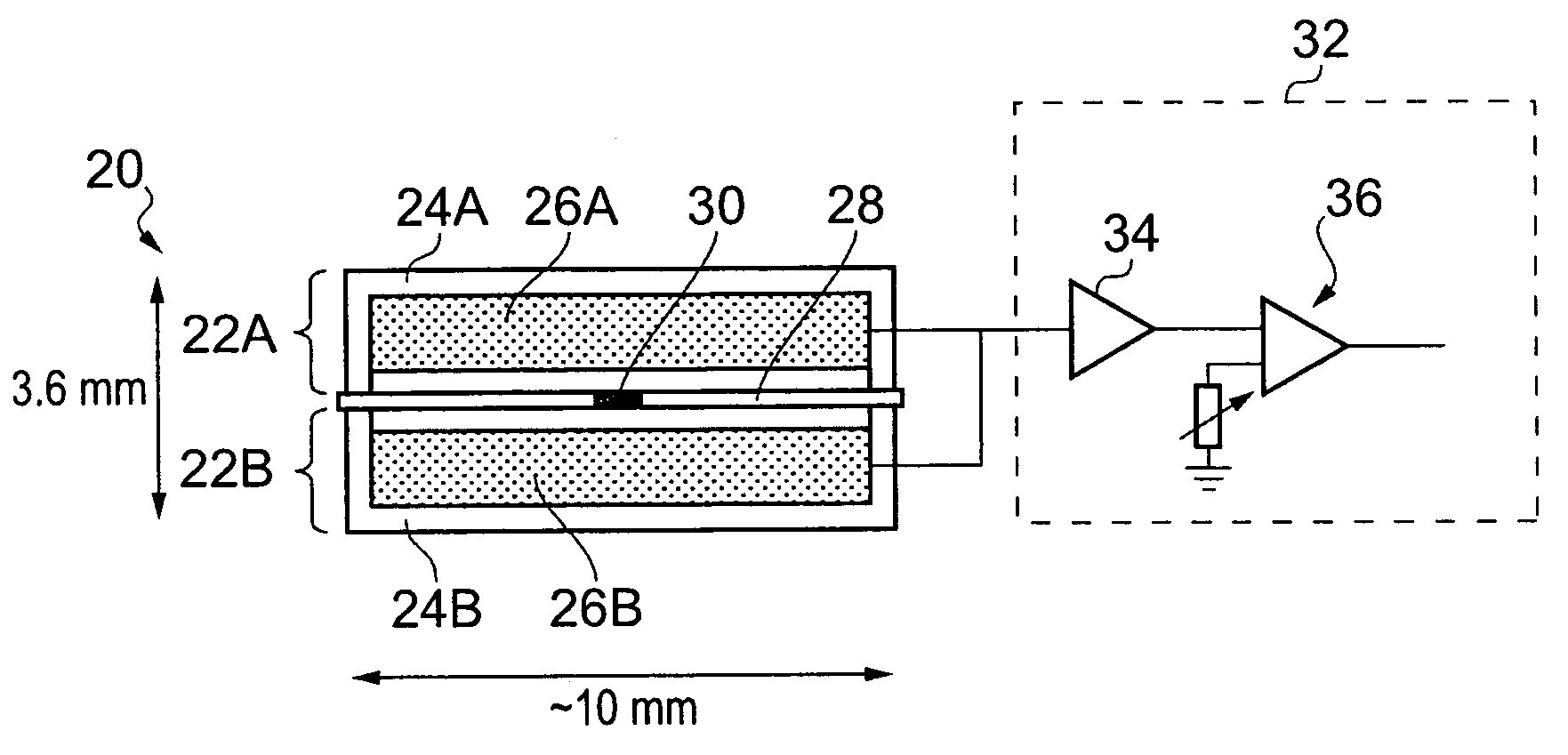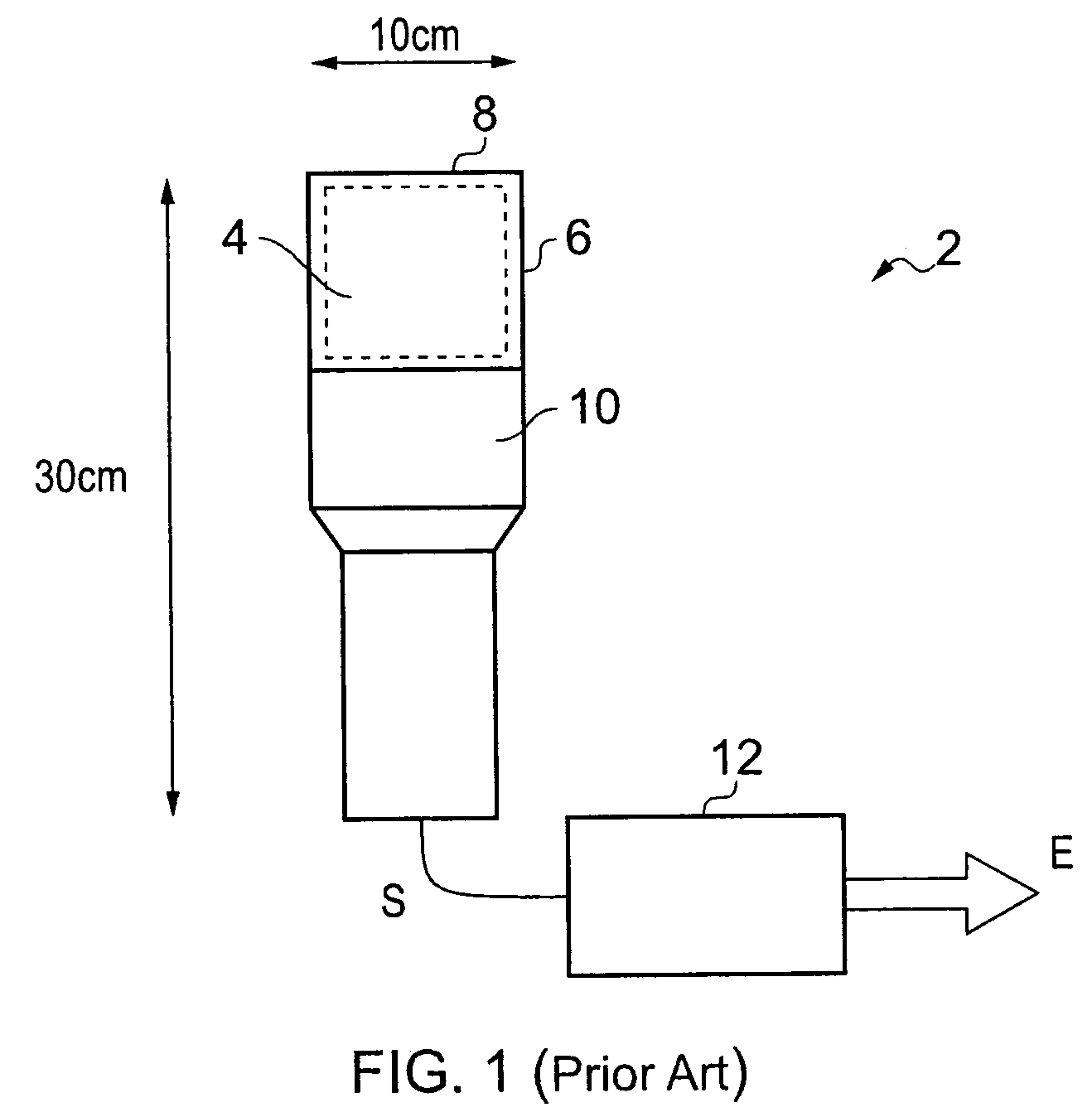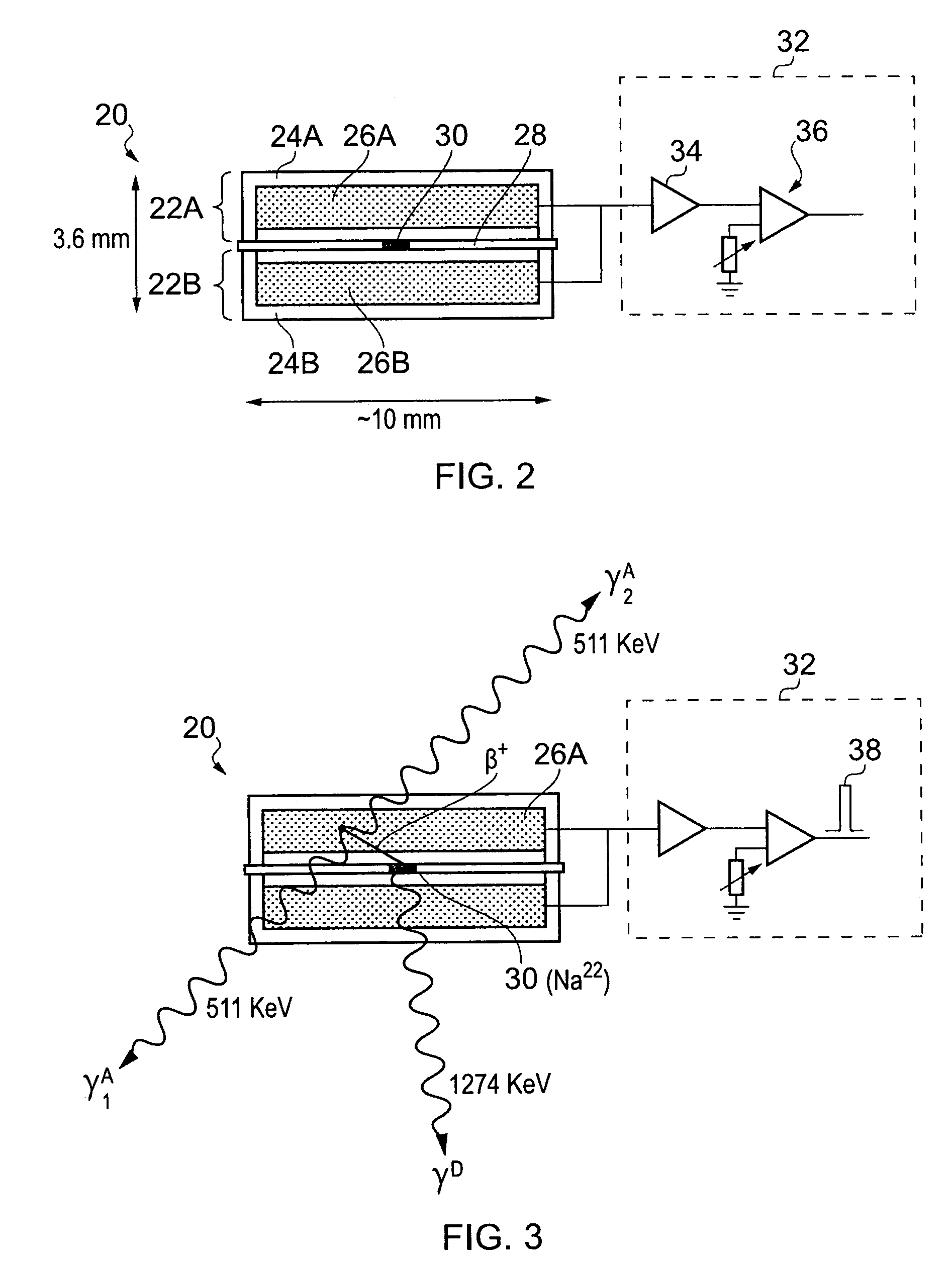Stabilization in gamma-ray spectometry
a gamma-ray and gamma-ray energy technology, applied in the field of gamma-ray spectrometry, can solve the problems of poorly calibrated spectrum, spectrometer's response changing according to different conditions, and the number of charge carriers generated at the photo-cathode of a pmt for a given gamma-ray energy deposit in a given spectrometer is not necessarily constan
- Summary
- Abstract
- Description
- Claims
- Application Information
AI Technical Summary
Benefits of technology
Problems solved by technology
Method used
Image
Examples
Embodiment Construction
[0037]FIG. 2 schematically shows a calibration source 20 according to an embodiment of the invention. The calibration source 20 is based around a deposit of radioactive material 30 comprising a radioactive isotope having a decay transition associated with emission of a radiation particle and a gamma-ray. In this example, the radioactive material comprises a salt of Na-22. Na-22 is associated with a radioactive transition that results in emission of a beta-plus particle (positron) having a maximum energy of around 545 keV, and a gamma-ray having an energy around 1274 keV. Subsequent matter-anti-matter annihilation of the positron further results in the emission of a pair of 511 keV gamma-rays. In this example the radioactive material 30 has an activity of around 100 Bq. This will of course reduce with time, with Na-22 having a half-life of around 2.6 years.
[0038]The radioactive material 30 is mounted on a substrate 28. In this example, the substrate 28 comprises a thin (e.g. 30 in a ...
PUM
 Login to View More
Login to View More Abstract
Description
Claims
Application Information
 Login to View More
Login to View More - R&D
- Intellectual Property
- Life Sciences
- Materials
- Tech Scout
- Unparalleled Data Quality
- Higher Quality Content
- 60% Fewer Hallucinations
Browse by: Latest US Patents, China's latest patents, Technical Efficacy Thesaurus, Application Domain, Technology Topic, Popular Technical Reports.
© 2025 PatSnap. All rights reserved.Legal|Privacy policy|Modern Slavery Act Transparency Statement|Sitemap|About US| Contact US: help@patsnap.com



